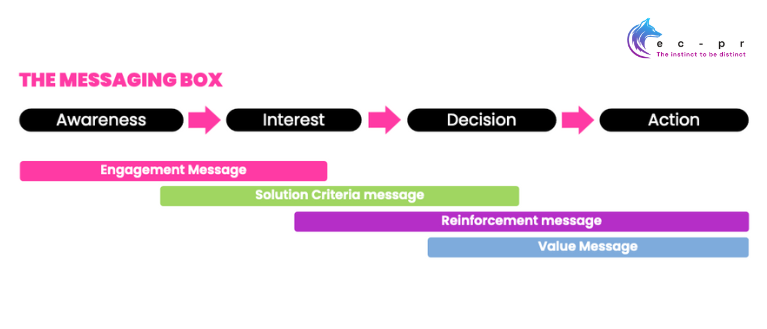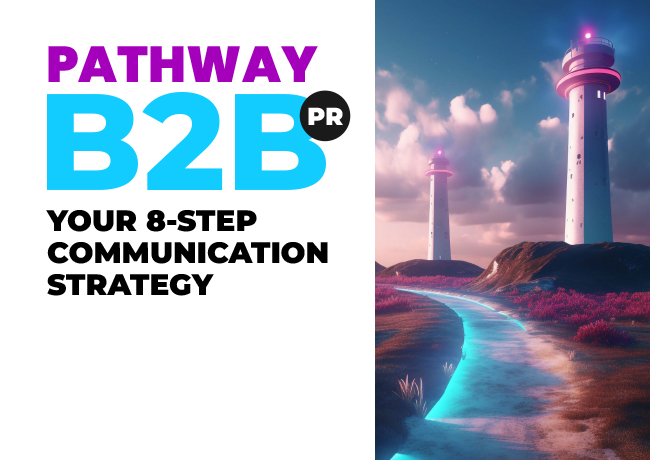
How to write a communication strategy: a business guide
8 steps to a winning communication strategy
Never take communication strategy development lightly, it’s pivotal to the realisation of your business plan. A communication strategy states how you will deliver on business goals from a marketing perspective. Knowing how to write an outstanding communication strategy is the difference between Coca-Cola and Red Cola. Not familiar with Red Cola? Exactly.
Here’s how to write a communication strategy with examples.
Communication strategy 101
A communications strategy outlines how you will deliver your business plan from a marketing, PR, and growth perspective. It focuses on what you say, to whom and when, as a business – uniting your voice across all materials and keeping you en route toward your goals.
Having a polished communication strategy to hand facilitates briefing external providers, agencies, and new hires. Note that the way you write a communications strategy should never produce a long, complex document, it should be clear, considered, and short enough for interested parties to read front -to-back.
What are the benefits of a comms strategy for companies?
- Ensures you’re speaking to the right people with the right message at the right time.
- Your PR agency can begin executing immediately, if you have a communication strategy, communicating with your audience for maximum impact and effect. This will ensure you get the most out of your PR budget.
- You’ll become more efficient and effective across all business operations
- Stay ahead of competitors and become an industry leader with a reputation for consistency, wherever prospects see you.
What you need to write an effective communication strategy
The expertise and insight you need to develop a B2B comms strategy already exist within your business. We’ll show you how to put together your value proposition, sector priorities, target personas, positioning statements, and messaging for each stage of the buying cycle. So, let’s start on the 8 steps to an excellent communication strategy.
The 8 steps to a winning communication strategy for business
To make this as actionable as possible, we’ve split the process into 8 simple steps which you can follow with your team’s support, or rope in a professional PR agency.
1. Working group – who needs to be involved
Before you even consider leaping into communication strategy planning, you need to get the right people involved – you are not going to be able to do this alone. Amazing communication strategies can only work when they are built on quality insights and expertise. Involving the right people will ensure your strategy has the right input and is subsequently deployed and adopted across the business. This is why you need expert, persuasive senior leaders from several areas of your company.
Who should be involved in developing and deploying a communication strategy?
Your communication strategy puts your customer at the heart of everything your company says and does, so your working group should reflect this.
Consider what your company sells and identify the most informed and engaging person regarding research & development, installation and maintenance; sales and marketing; customer service and training.
Select people who you think will be an asset to your project, noting their name, specialty and responsibilities, and value specific you believe they can bring.
Finally, identify the board member you would most like to champion your strategy, detailing the role you want them to play in developing, embedding, and activating the strategy.
Use these notes to send out formal, personalised invitations expressed with gravitas and forethought.
When you invite the participants, make sure they understand why you have asked them. Share your champion team with all participants together with your rationale. This will help them to understand how important you regard both the project and the value they will bring.
2. Commercial context
You should never forget the need for sales leads when planning any business strategy, a communication strategy is no exception. A comprehensive understanding of board-approved sales objectives is critical to this.
Ask your task force sales lead to outline the goals for the next quarter. By saying ‘quarter’, it makes the entire communication strategy process feel more immediate, promoting a sense of urgency.
The salespeople you involve in your project will most definitely be more engaged if they see all the communication strategy champions are focused on helping them hit their numbers this coming quarter!
Outline sales targets in your communication strategy:
Not only should you include these sales targets in the strategy documentation, but they should also inform every step of your communication strategy development.
3.Value proposition
Articulating your value proposition well tells prospects why they should buy from you, and not elsewhere. Your value proposition captures why you exist and why your customers should care – a rallying point for everything the company shares. It keeps your communication, both verbal and written, focused and relevant.
Analyse your existing value proposition
A value proposition will:
- Identify the most compelling benefit you offer.
- Describe what makes this benefit valuable.
- Identify your target customer’s main problem.
- Connect the value to the problem.
- Differentiate you as the preferred provider of this value.
Not sure your current value proposition is up to scratch? Here’s how to construct it anew. Put your patient cap on, you are unlikely to have immediate consensus. Start by completing the template below.
[Your company name] is the only [competitive category] that provides [your target audience] with [an emotional benefit] by/with/through [how you achieve this].
Aim for working group consensus. The best way to do this is to evidence each phrase in the statement so you know it to be true or attainable.
4. Sector prioritisation
Unless you have bottomless pockets and no time pressures to reach sales goals, you’ll need to prioritise an audience and focus sales and marketing resources on that group. In our words, identifying your target audience is the way to effortlessly purr your way to keen prospects, rather than roaring and thrashing around hoping to swipe some business.
Start by gathering insights about your ideal customers, by capturing their key characteristics:
- Who – identify a target segment by pain points, not demographic identifiers
- Where – document when they spend time
- Why – include psychological attributes that make them a good target
Cluster this information to find overlapping common characteristics. This audience is who you should spend most of your time, energy, and cash speaking to.
5. Target audience
At this stage, you can also identify an idealised version of who you want to serve, a target persona or ideal customer profile. They are not real people, but they should feel like one. Narrowing your audience to this point is like a hawk narrowing its focus on prey: It focuses on the bird, and ignores all the vegetation, sounds, and other distractions around it.
What attributes should be in a persona? Our persona template includes:
- Persona name (make it memorable and relevant)
- Responsibilities within the business (not their job title as this can be misleading)
- Role in purchase of what you sell
- How are they perceived by colleagues
- What expertise and skills they are looking for in a supplier
- Their geographical needs
- What they want to achieve professionally and personally
- Where they work
- Values and what behaviours are important to this person
- Fears they hold
- Pet peeves or persistent irritations
- Preferred information sources
Feel free to start with many target personas, a brainstorm can be narrowed down. Once you’ve worked your way down to three or four personas who are crucially: relevant, in need, and in purchasing positions, put your blinkers on.
6. Positioning statement
Now you know firmly who you’re talking to and why, develop your positioning statement. This should speak directly to the heart of your individual target personas.
For each of your personas, complete this template:
To [your target persona’s name], [your product/service name] is the only [category] that delivers [key customer benefit] unlike [nearest competitive alternative].
Agreeing on this together with your comms champions will be integral to the success of your communications strategy, without it, you might find yourself treading water as a team because your messaging will lack focus. This brings us onto the seventh step.
7. Messaging for each stage of the buying cycle
There are four stages of the buying cycle, and you may know of them by the acronym AIDA (awareness, interest, desire, action). This is also known as the customer journey or the decision-making process.
Some journeys are short, with a buying decision made in weeks, whilst others take months or even years. A person might become aware and respect your brand decades before they become the target audience, and have a need for it. For this reason, longevity of branded messaging should be considered in your communications strategy. In short, don’t write boilerplates that will seem dated in a year. Messaging at each stage of AIDA must be specific, relevant, compelling, and when possible, timeless.
During the first two phases of the customer journey, focus on earning trust. In the latter two stages, you’ll be building up their desire to purchase. No stage can be skipped as each plays an important role in the journey and building a quality customer relationship.
i) Engagement message:
At this stage, your target persona has entered the buying cycle. They are becoming aware that they have an issue but have not yet started considering possible resolutions.
Your communications objective, to create engagement, is to get them to perceive you as the experts, with comprehensive understanding of that issue, also called a pain point.
ii) Solution message:
Your target audience should soon start to investigate possible solutions to their issue. At this stage, help them better understand the specific nature of their challenges and begin to plant the idea of the ideal solution for them existing – whilst still curbing your desire to reveal your self-interest. You need to be informative and helpful.
Your challenge is to build trust by advising and guiding them through a myriad of possible options and highlighting the pros and cons of each.
iii) Reinforcement message:
Once you’ve engaged a prospect, you’re on their consideration list. Now, it’s ok to talk about your company. This stage is about reinforcing, in the mind of your target audience, how your offering is the most desirable solution to their specific issue.
If you’ve spent time nurturing them through phases one and two, this should be a logical and natural progression of the conversation.
iv) Value message:
Finally, your prospect is perhaps considering you and comparing you to another option. Relentless telephone calls and emails are not going to nudge you over the line. In fact, it may have the opposite effect and drive them away.
Instead, boldly communicate the value you can add, the difference you can make, and the successes you’ve delivered to other businesses. Then let them make a decision.
8. Validation
Once you completed the first iteration of your communication strategy and your task force is thrilled to be part of it, run it past a small group of trusted customers. Ensure there’s a good mix representing your ideal personas, not only a spread across current customer types so that you get balanced feedback.
Remember, you’re not seeking to present your comms strategy to them in its entirety and asking if they agree with it. You are validating any assumptions you made in the process about:
- persona descriptions
- pain points
- issues
- challenges
- interests
As trusted customers, listen closely to what they perceive as your strengths, weaknesses, opportunities, and threats. It’s essential to pay attention to the language they use. You should then use their feedback to refine and finalise your comms strategy.
Now you have your comprehensive communication strategy, it’s time to implement it with confidence that the validation process has provided.
You must review your existing brand assets, such as your website, thought leadership articles, white papers, insight, presentations, LinkedIn profiles, news, events etc. and make sure they reflect your new value proposition and your messaging is embedded throughout.
You will also need to ensure that every message is current and accessible to the target audience outlined in the communications strategy. Then it’s time to start strategically planning campaigns that will amplify the exposure of all these compelling assets.
Looking to master communications strategy? Download Pathway, Your 8-Step Communication Strategy. Alternatively, hand over the hard graft to experts in PR strategy for scaling businesses.



